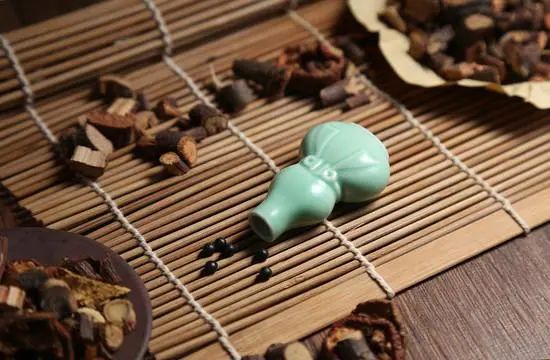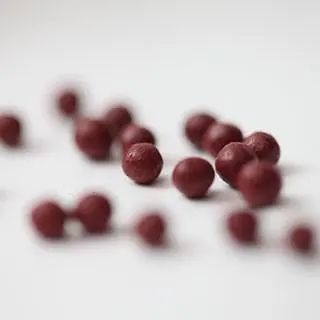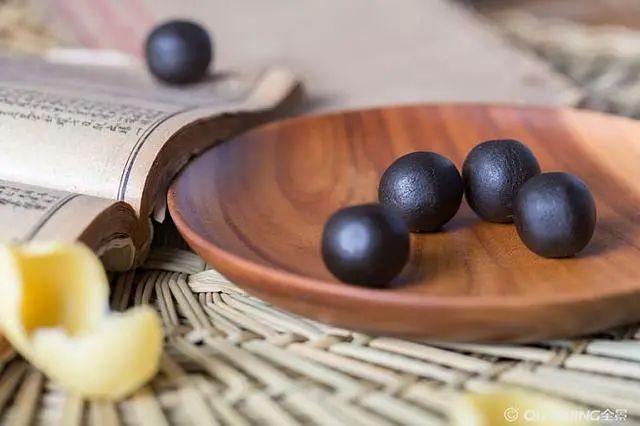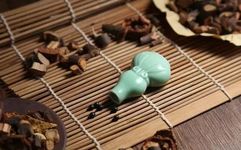Director Zhao popularizes health and wellness knowledge.
Click below to follow for free ↓↓↓
There are many Traditional Chinese Medicines (TCM) for activating blood circulation and resolving stasis, such as Fangpian Xueshuantong (Compound Thrombus-Resolving), Naoshuantong (Cerebral Thrombus-Resolving), Xuesaitong (Blood Stasis-Resolving), Naoluotong (Cerebral Network-Resolving), Tongxinluo (Heart Channel-Opening), and Huoxuetongmai (Blood Activating and Channel Opening). These medicines may sound similar, but their effects and indications are quite different, so be careful not to take the wrong one.

Although they are all TCM for activating blood circulation and resolving stasis, their effects differ and have specific focuses. Below, Yixian Pharmacist introduces ten TCMs for activating blood circulation and resolving stasis for your learning and reference.

1. Guangxin Suhe Wan (Coronary Heart Suhe Pill) This is a Qi-regulating and harmonizing medicine. Suhexiang (Liquidambaris) is warm and aromatic, while Bingpian (Borneol) is cool and aromatic, both serving as the monarch drugs. Ruxiang (Frankincense) and Tanxiang (Sandalwood) are warm and disperse, warming the meridians and activating blood, serving as minister drugs. Tumuxiang (Atractylodes) strengthens the spleen and stomach, regulates Qi, resolves depression, and alleviates pain, serving as an assistant drug. Together, these herbs regulate Qi, open the chest, warm the meridians, and relieve pain. It is used for chest obstruction due to cold congealing in the blood vessels, angina pectoris, presenting as chest pain radiating to the back, chest tightness, shortness of breath, fatigue, and cold limbs.Guangxin Suhe Wan warms and disperses cold, and is not suitable for those with heat closure syndrome. It is contraindicated for those with Yin deficiency and excess fire, as its composition consists mainly of warm and aromatic herbs. The main adverse reaction is gastrointestinal discomfort; those with gastrointestinal diseases or spleen and stomach deficiency should use it with caution.

2. Fangpian Xueshuantong Jiao Nang (Compound Thrombus-Resolving Capsules) This is composed of Sanqi (Notoginseng), Huangqi (Astragalus), Danshen (Salvia), and Xuan Shen (Scrophularia), classic herbs for regulating blood. It has the effects of activating blood circulation, resolving stasis, tonifying Qi, and nourishing Yin. It is indicated for retinal vein occlusion with blood stasis and Qi-Yin deficiency, presenting as decreased vision or visual abnormalities, and for stable exertional angina pectoris with blood stasis and Qi-Yin deficiency. In modern medicine, it is often used to treat hyphema, macular hemorrhage, retinal vein occlusion, carotid atherosclerosis, prevent recurrent cerebral infarction, treat dry eye syndrome, hypertension, and angina pectoris.3. Naoshuantong Jiao Nang (Cerebral Thrombus-Resolving Capsules) This is composed of Puhuang (Typha), Chishao (Red Peony), Yujin (Curcuma), Tianma (Gastrodia), and Loulu (Rehmannia), and has the effects of activating blood circulation, unblocking collaterals, dispelling wind, and resolving phlegm. It is used for ischemic stroke caused by wind-phlegm and blood stasis during the acute and recovery phases, presenting as hemiplegia, facial asymmetry, speech difficulties or aphasia, numbness on one side of the body, shortness of breath, fatigue, or dizziness and tinnitus, especially in cases of cerebral infarction with the above symptoms. Naoshuantong Jiao Nang is mainly suitable for stroke and cerebral infarction.4. Xuesaitong Jiao Nang (Blood Stasis-Resolving Capsules) This is composed of total saponins of Sanqi (Notoginseng). It has the effects of activating blood circulation, resolving stasis, and unblocking collaterals, inhibiting platelet aggregation, and increasing cerebral blood flow. It is used for blood stasis obstructing the brain, hemiplegia due to stroke, heart vessel stasis, chest pain; sequelae of cerebrovascular diseases, and angina pectoris due to the above syndromes. It is suitable for blood stasis syndrome without obvious cold or heat symptoms.5. Tongxinluo Jiao Nang (Heart Channel-Opening Capsules) This is a blood-regulating agent composed of Ren Shen (Ginseng), Shuizhi (Leech), Quanscorpius (Scorpion), Chishao (Red Peony), Chanting Cicada (Cicada Slough), Tumuxiang (Atractylodes), Wugong (Centipede), Tanxiang (Sandalwood), Jiangxiang (Incense), Ruxiang (Frankincense, processed), Suanzaoren (Sour Jujube Seed, roasted), and Bingpian (Borneol), totaling twelve medicinal ingredients. In this formula, Ren Shen is the monarch drug that tonifies heart Qi. Shuizhi and Tumuxiang activate blood circulation and resolve stasis, unblocking the meridians; Quanscorpius, Wugong, and Cicada Slough are insect drugs that help the other herbs to penetrate the meridians and relieve spasms, serving as minister drugs. Chishao activates blood and disperses stasis, relieving pain; Bingpian is aromatic and disperses, serving as an assistant drug. Together, these herbs enhance Qi, activate blood, unblock collaterals, and relieve pain. It is indicated for angina pectoris due to heart Qi deficiency and blood stasis obstruction, presenting as chest tightness, angina, palpitations, spontaneous sweating, shortness of breath, fatigue, and a purple or dark tongue with stasis spots. It is also used for stroke with Qi deficiency and blood stasis obstruction, presenting as hemiplegia or unilateral numbness, facial asymmetry, and speech difficulties.Note: This medicine is contraindicated for bleeding disorders, pregnant women, and women during menstruation, as well as those with Yin deficiency and excess fire.6. Huoxuetongmai Pian (Blood Activating and Channel Opening Tablets) This is composed of Jixueteng (Spatholobus), Sanqi (Notoginseng), Danshen (Salvia), Chishao (Red Peony), Honghua (Safflower), Jiangxiang (Incense), Yujin (Curcuma), Sanqi (Notoginseng), Chuanxiong (Ligusticum), Chenpi (Dried Tangerine Peel), Muxiang (Aucklandia), Shichangpu (Acori), Gouqizi (Goji Berries), Jiu Huangjing (Wine-processed Polygonatum), and Ren Shen (Ginseng). In this formula, Sanqi, Huangjing, Mai Dong, Chenpi, Jixueteng, and Danshen activate blood circulation and relieve pain; Ren Shen, Chishao, Gegen (Kudzu), and Yujin nourish and activate blood circulation; Honghua, Jiangxiang, Muxiang, Chuanxiong, Taoren (Peach Kernel), and Bingpian promote Qi circulation, activate blood, and relieve pain. Together, these herbs activate Qi, invigorate blood, unblock collaterals, and relieve pain. It is indicated for angina pectoris due to Qi stagnation and blood stasis.7. Qishen Yiqi Wan (Astragalus and Ginseng Qi-Enhancing Pill) This is composed of Huangqi (Astragalus), Danshen (Salvia), Sanqi (Notoginseng), and Jiangxiang (Incense). It tonifies Qi, unblocks collaterals, and activates blood to relieve pain. It is indicated for chest obstruction due to Qi deficiency and blood stasis, presenting as chest tightness, chest pain, shortness of breath, palpitations, pale complexion, spontaneous sweating, a thick tongue with teeth marks, a dark or purple tongue with stasis spots, and a pulse that is deep or wiry. It is suitable for angina pectoris due to coronary heart disease with the above symptoms.8. Yangxin Shi Pian (Heart Nourishing Tablets) This is composed of Huangqi (Astragalus), Dangshen (Codonopsis), Danshen (Salvia), Gegen (Kudzu), Yinyanghuo (Epimedium), Shanzha (Hawthorn), Dihuang (Rehmannia), Danggui (Angelica), Huanglian (Coptis), Cu Yanhusuo (Vinegar-processed Corydalis), Lingzhi (Reishi), Ren Shen (Ginseng), and Zhi Gancao (Honey-fried Licorice). In this formula, Huangqi, Yinyanghuo, Dangshen, Lingzhi, Ren Shen, and Zhi Gancao tonify Qi and stabilize the foundation, connecting the heart and kidney; Danshen, Danggui, Shanzha, and Cu Yanhusuo activate blood circulation, resolve stasis, and relieve pain; Gegen, Dihuang, and Huanglian nourish Yin, clear heat, calm the mind, and nourish the heart. Together, these herbs support the righteous Qi, tonify the foundation, invigorate blood, and relieve pain. It is indicated for coronary heart disease, angina pectoris, myocardial infarction, and combined with hyperlipidemia and hyperglycemia with the above symptoms. Yangxin Shi Pian has the characteristics of strengthening Qi, gently activating blood, and simultaneously nourishing the heart and calming the mind.9. Xiaoshuantongluo Pian (Thrombus-Resolving and Collateral-Unblocking Tablets) This is composed of Chuanxiong (Ligusticum), Danshen (Salvia), Huangqi (Astragalus), Zexie (Alisma), Sanqi (Notoginseng), Huaihua (Sophora Flower), Guizhi (Cinnamon Twig), Yujin (Curcuma), Muxiang (Aucklandia), Bingpian (Borneol), and Shanzha (Hawthorn). It activates blood circulation, resolves stasis, warms the meridians, and unblocks collaterals. It is indicated for stroke caused by blood stasis obstruction, presenting as dull expression, slurred speech, cold hands and feet, and limb pain; ischemic stroke and hyperlipidemia with the above symptoms.Xiaoshuantongluo Pian may cause adverse reactions such as nausea, vomiting, abdominal pain, diarrhea, dizziness, headache, rash, and itching. It is contraindicated for pregnant women and those with hemorrhagic stroke. Use with caution in those with prominent Yin deficiency and internal heat, or phlegm-heat syndrome.10. Liqi Huoxue Diyan (Qi Regulating and Blood Activating Drops) This is composed of Da Guo Mu Jiangzi (Ginger), Xiaobai (Garlic), Chuanxiong (Ligusticum), and Aiye (Mugwort). In this formula, Da Guo Mu Jiangzi activates Yang and invigorates blood, serving as the monarch drug; Xiaobai and Chuanxiong activate Yang, disperse masses, and regulate Qi, serving as minister drugs; Aiye opens the orifices, awakens the spirit, clears heat, and relieves pain, serving as an assistant drug. Overall, this formula harmonizes the cold and heat, effectively activating Yang and regulating Qi, while also possessing the dual effects of aromatic warming and blood activating and stasis resolving, thus achieving the effects of regulating Qi, activating Yang, and relieving pain, particularly effective for coronary heart disease angina pectoris due to Yang deficiency and blood stasis obstruction.Note: Some text and image resources in this article are sourced from the internet. The purpose of reprinting this article is to convey more information. If there are any errors in source attribution or infringement of your legal rights, please notify us immediately, and we will delete it promptly and apologize to you.Past highlights:How many of these TCMs for epilepsy do you know?~~These TCMs for hyperlipidemia are worth collecting~Throat swelling and pain, pharyngitis? Which TCM is the best to choose?Director Zhao popularizes health and wellness knowledge.
Click below to follow for free ↓↓↓

